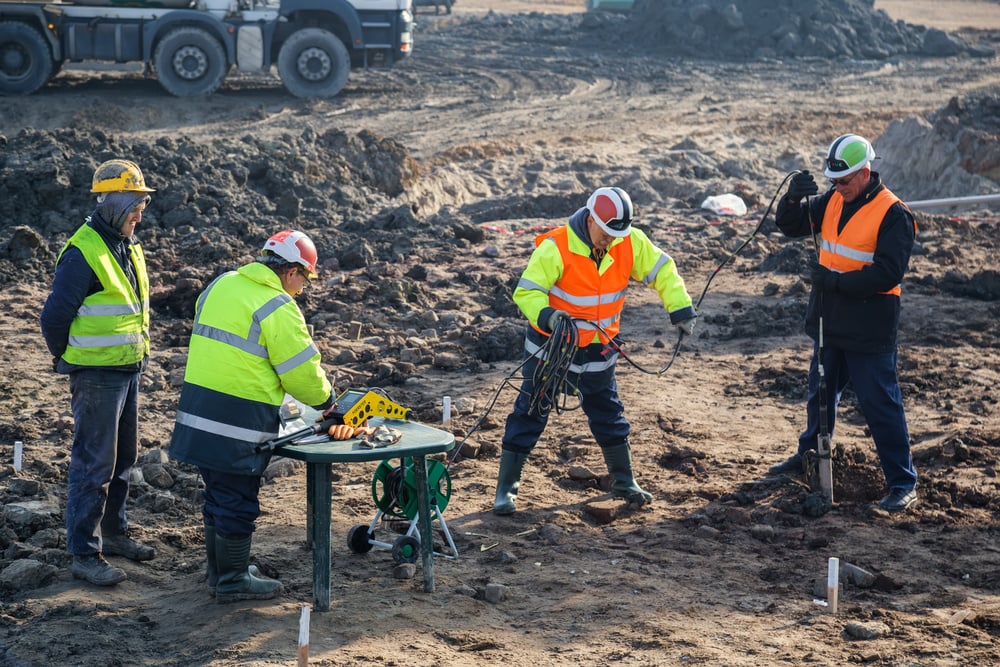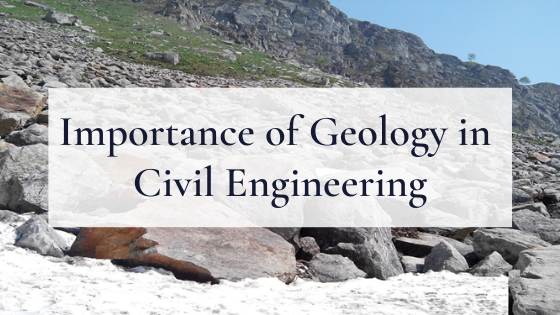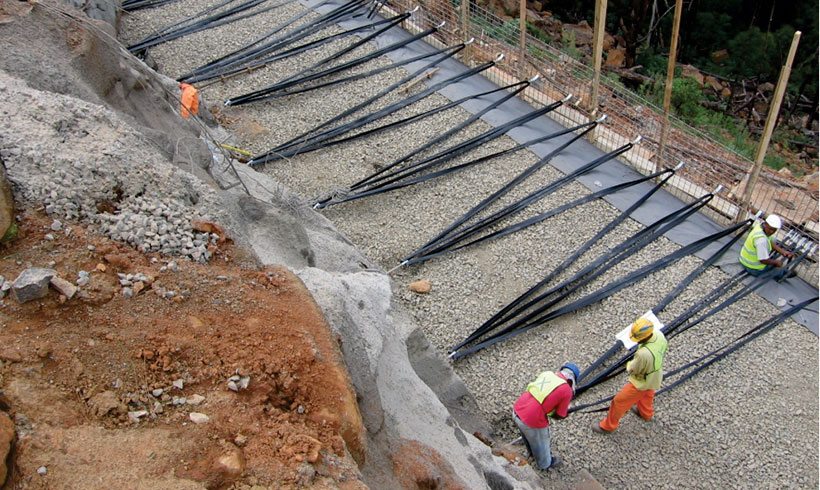The 9-Second Trick For Geotechnical Engineering For Construction Projects
The Ultimate Guide To Geotechnical Engineering For Construction Projects
Table of ContentsOur Geotechnical Engineering For Construction Projects IdeasFascination About Geotechnical Engineering For Construction ProjectsAll about Geotechnical Engineering For Construction ProjectsThe 8-Minute Rule for Geotechnical Engineering For Construction ProjectsWhat Does Geotechnical Engineering For Construction Projects Do?Some Ideas on Geotechnical Engineering For Construction Projects You Should KnowSee This Report about Geotechnical Engineering For Construction Projects
and Kovacs, W. (1981 ), An Introduction to Geotechnical Engineering, Prentice-Hall, Inc. Deep Check Technology (2023 ): Deep Scan Tech discovers hidden structures at the site of Denmark's tallest structure. "Geofrost Coring". GEOFROST. Obtained 20 November 2020. Han, Jie (2015 ). Principles and Technique of Ground Enhancement. Wiley. ISBN 9781118421307. RAJU, V. R.Ground Renovation Technologies and Instance Histories. Singapore: Research Publishing Providers. p. 809. ISBN978-981-08-3124-0. Ground Renovation Concepts And Applications In Asia. Pariseau, William G. (2011 ). Design analysis in rock auto mechanics. CRC Press. Hegde, A.M. and Palsule P (Geotechnical Engineering for Construction Projects).S. (2020 ), Performance of Geosynthetics Reinforced Subgrade Subjected to Repeated Lorry Plenties: Speculative and Numerical Studies.
Cengage Discovering, Stamford, 666 p. Atkinson, J., 2007. The auto mechanics of soils and structures. The Observational Approach in ground engineering concepts and applications.
The Geotechnical Engineering For Construction Projects Ideas
Lab and area testing plays a critical function in this process. By drawing out samples from the earth's subsurface and applying a collection of tests, geotechnical engineers can anticipate the behavior of soil layers and evaluate their viability for numerous building endeavours. The essence of geotechnical engineering in civil design can not be overemphasized, attributable to a number of variables: The initial action in any type of geotechnical research involves establishing the soil kind at the construction site.
The foundation acts as the bedrock of any type of construction task. Picking the proper structure type is a decision that hinges on the extensive evaluation supplied by geotechnical design.

Geotechnical site investigation is a vital step in the planning and implementation of any construction task. It includes the collection and analysis of data connected to the physical buildings of dirt and rock below a suggested building website. This info is crucial for the layout and construction of risk-free, stable, and lasting frameworks.
The 2-Minute Rule for Geotechnical Engineering For Construction Projects
, additionally understood as subsurface exploration, includes a series of tasks aimed at establishing the soil, rock, and groundwater conditions at a building website. The key purposes are to determine possible geotechnical hazards, analyze the engineering properties of subsurface products, and provide referrals for the design and construction of foundations, keeping walls, and other structures.
The desk study helps in recognizing possible geotechnical concerns and preparing the subsequent fieldwork. This entails observing the topography, water drainage patterns, existing frameworks, plants, and any type of signs of instability or disintegration.
Geotechnical Engineering For Construction Projects - An Overview
Superficial test pits are dug deep into to straight observe and sample the soil and rock. This approach serves for examining the top layers of the subsurface and recognizing near-surface threats. Non-invasive geophysical approaches, such as seismic refraction, ground-penetrating radar (GPR), and electrical resistivity tomography (ERT), are utilized to map subsurface problems and identify abnormalities.
Dirt and rock samples gathered during the field examination are subjected to laboratory testing to determine their physical and mechanical residential or commercial properties. These tests give vital information for geotechnical evaluation and layout.
The main advantage of geotechnical website examination is making certain the safety and stability of structures. By comprehending the subsurface use this link conditions, engineers can make foundations and various other architectural aspects that can hold up against the loads and ecological forces they will certainly be read the article subjected to. This reduces the danger of negotiation, subsidence, and architectural failure.
Geotechnical Engineering For Construction Projects - An Overview
Understanding soil attributes can lead the selection of excavation methods, dewatering methods, and ground improvement measures. This makes sure effective and safe building techniques. Geotechnical website investigations are frequently called for by constructing codes and laws. Complying with these requirements guarantees compliance with legal and security requirements, preventing potential lawful responsibilities and job delays.
This info is important for job managers, designers, and professionals in establishing realistic routines, spending plans, and backup plans. Geotechnical Engineering for Construction Projects. Skyscraper Building in a Coastal AreaIn a seaside city, a high-rise domestic building was intended on a site with presumed loose sand deposits and a high water table. A comprehensive geotechnical investigation, consisting of borehole boring, CPT, and geophysical surveys, was carried out
The Of Geotechnical Engineering For Construction Projects
Based upon these findings, the structure design was customized to include deep heap foundations extending right into steady strata, and ground enhancement methods, such as vibro-compaction, were implemented to minimize liquefaction threats. This positive approach ensured the security and stability of the structure while preventing expensive post-construction removal. Framework Advancement on a Sloping TerrainA significant framework task, including the building of a freeway linked here and bridges, was intended on an uneven surface with high slopes.

The Leaning Tower of Pisa (Italy), a legendary architectural marvel, is notorious for its unintentional tilt from considerable geotechnical concerns. The tower's foundation was inadequately created to deal with the soft, unstable soil beneath it, causing uneven settlement and its distinctive lean. Our world is populated with outstanding facilities projectsfrom towering skyscrapers to stretching bridgesall standing statement to the advancement of the numerous building devices and methods readily available.
Geotechnical engineering is a specific area within civil design that concentrates on examining the actions of earth products. This branch digs deep right into the groundinvestigating how the soil, rock, and groundwater at a building and construction site can influenceand be influenced bythe framework that we put up on and into them. Before a single block is laid or a concrete structure poured, geotechnical designers probe right into the earthgathering critical data concerning the website's soil make-up, rock structure, and groundwater levels.
Not known Facts About Geotechnical Engineering For Construction Projects

is a device utilized to evaluate the integrity and load-bearing capability of heaps during setup, leveraging the concept of wave propagation. It optimizes building effectiveness by supplying real-time assessments, thus guaranteeing secure and reliable stack structures. Among the functional applications of geotechnical engineering involves determining and carrying out the ideal methods for foundation building and construction.
Stack driving represents more than the plain act of putting structural elements into the ground. However, it is a meticulously coordinated process of moving a structure's lots past the less steady dirt layers more detailed to the surfacedown to the extra significant strata that exist underneath. When it comes to heap driving, think about how geotechnical engineers skillfully use this strategy to uniformly distribute the framework's weight.